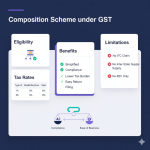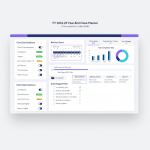Imagine this.
You’re a business owner. It’s the 28th of the month. Your biggest client has missed their payment, again.
You glance across the room at your 30 employees. They’re answering customer queries, updating invoices, preparing campaign pitches. Payroll is due in three days. If that one payment doesn’t come through, salaries will be delayed by over a week.
Sounds like a nightmare?
This is the monthly reality for thousands of Indian businesses, growing, profitable on paper, and still at the mercy of delayed collections.
And if you’ve been in this situation, you’ve likely done that awkward thing too: calling a customer, making small talk for two minutes, then finally asking, “Just checking, is the payment likely to happen today?”
Receivables shouldn’t be this personal. Or this painful.
Why Collections Are Broken Today
It’s not always about bad intent. Most customers don’t delay to hurt you. But the system, or lack of one, makes delays inevitable.
Here’s what usually goes wrong:
- You raise the invoice, they lose it in their inbox.
- You follow up, the person who processes payments is out of office.
- You assume they’ll get back, they assume you’ll remind again.
- There’s no rhythm, no system, no accountability.
Meanwhile, your Tally shows the invoice is overdue. But when was the last time you, as a business owner, logged into Tally? It’s not your fault. It wasn’t built for business insights, it was built to tally your books.
What AR Automation Actually Means
That’s where AR automation steps in, not as just another dashboard, but as a shift in how your finance function thinks and works. Imagine AR automation as more than just a new tool. It’s like giving your finance team a memory and a backbone.
It’s not just about sending out stylish reminders. Instead, it’s about having a clear understanding of which customers are likely to delay payments, knowing when to reach out based on their behavior rather than making assumptions, and accurately assessing the amount of money at risk.
It also helps you determine if this month’s collections will be enough to cover your expenses. If you’re using AI Accountant, it will seamlessly integrate with your existing Tally or Zoho Books account, enhancing them rather than replacing them.
One big benefit of AI Accountant is that it also matches your bank transactions with pending receivables, so you can quickly get the most updated data based on recent transactions. This is something that junior accountants often take a whole day to close, but with AI Accountant, that will be a thing of the past.
6 Metrics to Constantly Monitor the Health of Your Receivables
Most Indian founders check receivables only when cash runs low. That’s too late.
Here’s what to look at every week, and what it tells you:
Total Receivables
This is your “expected cash inflow,” but it’s often inflated. Many businesses carry phantom receivables, like a cancelled deal never officially written off.
What to track:
- Amount outstanding by due date
- Write-off thresholds, knowing when to stop chasing

Current Due vs. Overdue Split
This shows what’s actionable versus what’s already delayed. A healthy business should have less than 20 percent of its total receivables in the overdue bucket.
Why it matters:
If more than 40 percent of your invoices are overdue, you’re not just slow at collections, you’re funding someone else’s working capital.
DSO (Days Sales Outstanding)
This is your average payment time.
Example: If your DSO is 72 days, but your vendor payments are due in 30, you’re stuck in a cash trap, profitable on paper but always short on liquidity.
AI Accountant gives you a DSO trendline and alerts when it’s rising.

Customer-Wise Aging
This tells you who your problem clients are. Not based on mood, based on data.

Why it matters:
That one client who delays every quarter might still be your favorite. But when seen in a chart, patterns speak louder than anecdotes.
Monthly Collections Trend
Cash collection should follow a curve, not a cliff.
What to look for:
- Slumps during festival seasons?
- Q4 spike then dry Q1?
- Inconsistent collections month on month?
This trend helps you plan salaries, vendor payouts, and working capital.
Receivables by Value Band
It’s not just about how many invoices are unpaid, but which ones.
Example: You may have 50 invoices outstanding, but just 3 of them account for 80 percent of the value. That’s where your energy should go.

What to Do Once You Have the Data
AR automation gives you insights. But insight only matters if it drives change.
Once you have DSO data and client behavior mapped, you can start:
- Segmenting clients into reliable, average, and chronic defaulters
- Negotiating smarter payment terms, like partial upfronts or milestone-based billing
- Building clauses that encourage early payment, such as discounts or penalties
- Tracking effectiveness month over month to tighten policies
With AI Accountant, this gets embedded into how you work. No new system, no migration, just a layer on top of what you already use.
From Stress to Structure
The pressure of receivables isn’t just financial. It affects morale. It affects decision-making.
When your team doesn’t know if cash will come in next week, you stop investing. You delay hiring. You play safe. You miss growth.
AR automation isn’t just a reporting tool, it’s a business continuity tool.
With AI Accountant, you stop chasing invoices manually and start planning confidently.
Our platform becomes your finance co-pilot, surfacing risks, structuring collections, and helping you fix the leak before it floods the business.



![All Tally Prime Shortcut Keys For Daily Use [Updated 2026]](https://www.aiaccountant.com/blog/wp-content/uploads/2025/11/Tally_Prime_Shortcut_Keys-150x150.webp?crop=1)
